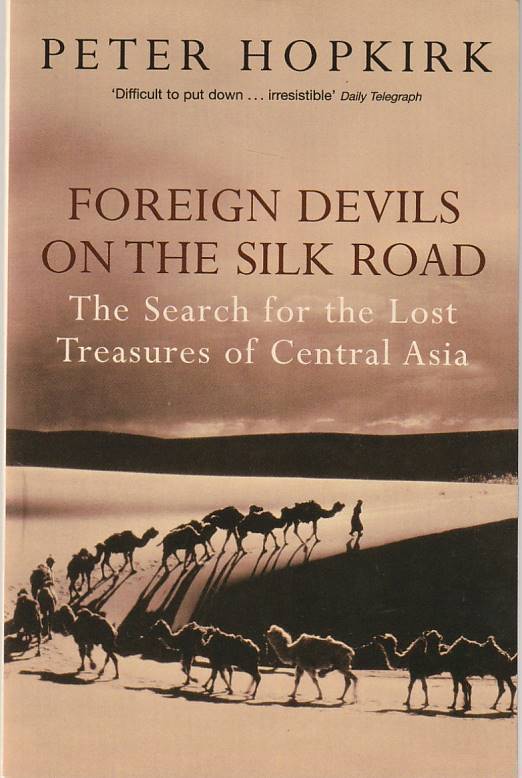
The Silk Road, the great trans-Asian highway linking Imperial Rome and distant China, reached the height of its importance during the T'ang Dynasty. Along it traveled cargos of silk, gold, ivory, as well as new ideas, art and knowledge. But then, China lost control of the region and finally the towns disappeared under the sands. Local legends grew of buried treasure.
Almost 1000 years later, archaeologists began to carry off huge quantities of paintings, sculptures, silks and early manuscripts, which are today scattered through museums worldwide. In piecing together this little-known chapter of Chinese history, Peter Hopkirk tells of the intrepid and determined men who led these archaelogical raids and traces the fate of the artwork they removed.
 €10
€10
The Silk Road, the great trans-Asian highway linking Imperial Rome and distant China, reached the height of its importance during the T'ang Dynasty. Along it traveled cargos of silk, gold, ivory, as well as new ideas, art and knowledge. But then, China lost control of the region and finally the towns disappeared under the sands. Local legends grew of buried treasure.
Almost 1000 years later, archaeologists began to carry off huge quantities of paintings, sculptures, silks and early manuscripts, which are today scattered through museums worldwide. In piecing together this little-known chapter of Chinese history, Peter Hopkirk tells of the intrepid and determined men who led these archaelogical raids and traces the fate of the artwork they removed.